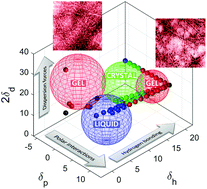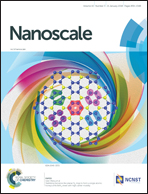Self-assembly pathways and polymorphism in peptide-based nanostructures†
Abstract
Dipeptide derivative molecules can self-assemble into space-filling nanofiber networks at low volume fractions (<1%), allowing the formation of molecular gels with tunable mechanical properties. The self-assembly of dipeptide-based molecules is reminiscent of pathological amyloid fibril formation by naturally occurring polypeptides. Fluorenylmethoxycarbonyl-diphenylalanine (Fmoc-FF) is the most widely studied such molecule, but the thermodynamic and kinetic phenomena giving rise to Fmoc-FF gel formation remain poorly understood. We have previously presented evidence that the gelation process is a first order phase transition characterized by low energy barriers to nucleation, short induction times, and rapid quasi-one-dimensional crystal growth, stemming from solvent–solute interactions and highly specific molecular packing. Here, we discuss the phase behavior of Fmoc-FF in different solvents. We find that Fmoc-FF gel formation can be induced in apolar solvents, in addition to previously established pathways in aqueous systems. We further show that in certain solvent systems anisotropic crystals (nanofibers) are an initial metastable state, after which macroscopic crystal aggregates with no preferred axis of growth are formed. The molecular conformation is sensitive to solvent composition during assembly, indicating that Fmoc-FF may be a simple model system to study complex thermodynamic and kinetic phenomena involved in peptide self-assembly.

- This article is part of the themed collection: Materials and Nano Research in Atlanta


 Please wait while we load your content...
Please wait while we load your content...